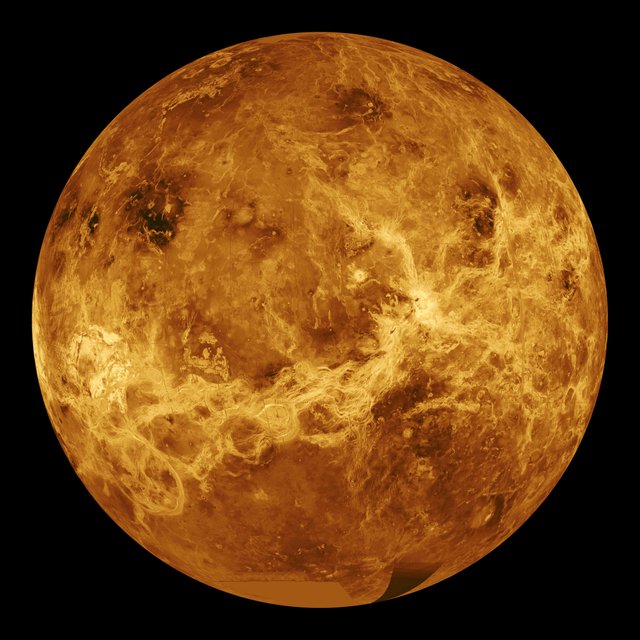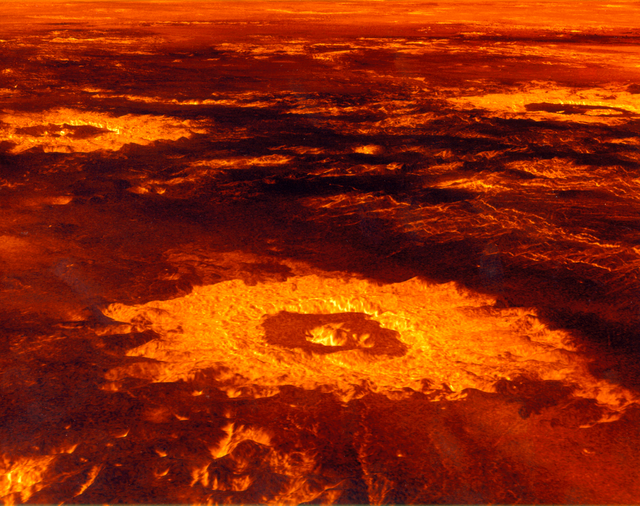
The planet Venus in terms of size and mass is very similar to Earth, which is why it is often described as the sister of our planet. The diameter of Venus is only 650 km lower than the Earth, and its mass corresponds to 81.5% of Earth's mass. However, the conditions on the surface of Venus are diametrically opposed to the conditions on Earth, due to the dense atmosphere consisting mainly of carbon dioxide. It accounts for 96.5% of the atmosphere mass, and the remaining 3.5% is mainly nitrogen.
Venus is classified as a terrestrial type planet due to its rocky nature.Venus has continents, mountains and craters. Its surface is dominated by volcanic landscape.

Venus is the hottest planet in the Solar System, although it is farther from the Sun like Mercury. The surface temperature of Venus is about 860 ° Fahrenheit or 460 ° Celsius.
The surface is heated by solar radiation, but the heat can not penetrate the clouds of carbon dioxide. This is the phenomenon of the "greenhouse effect".
The high concentration of sulfur compounds indicates the constant volcanic activity of the planet (despite evidence in the form of observed lava flows). The surface of the planet has a relatively small number of impact craters, which means that Venus is a relatively young planet - its age is estimated at 300-600 million years.
Venus circles the Sun in 262 days. For comparison, the period of the Earth's circulation is 365 days.
Sources: https://pl.wikipedia.org/wiki/Wenus